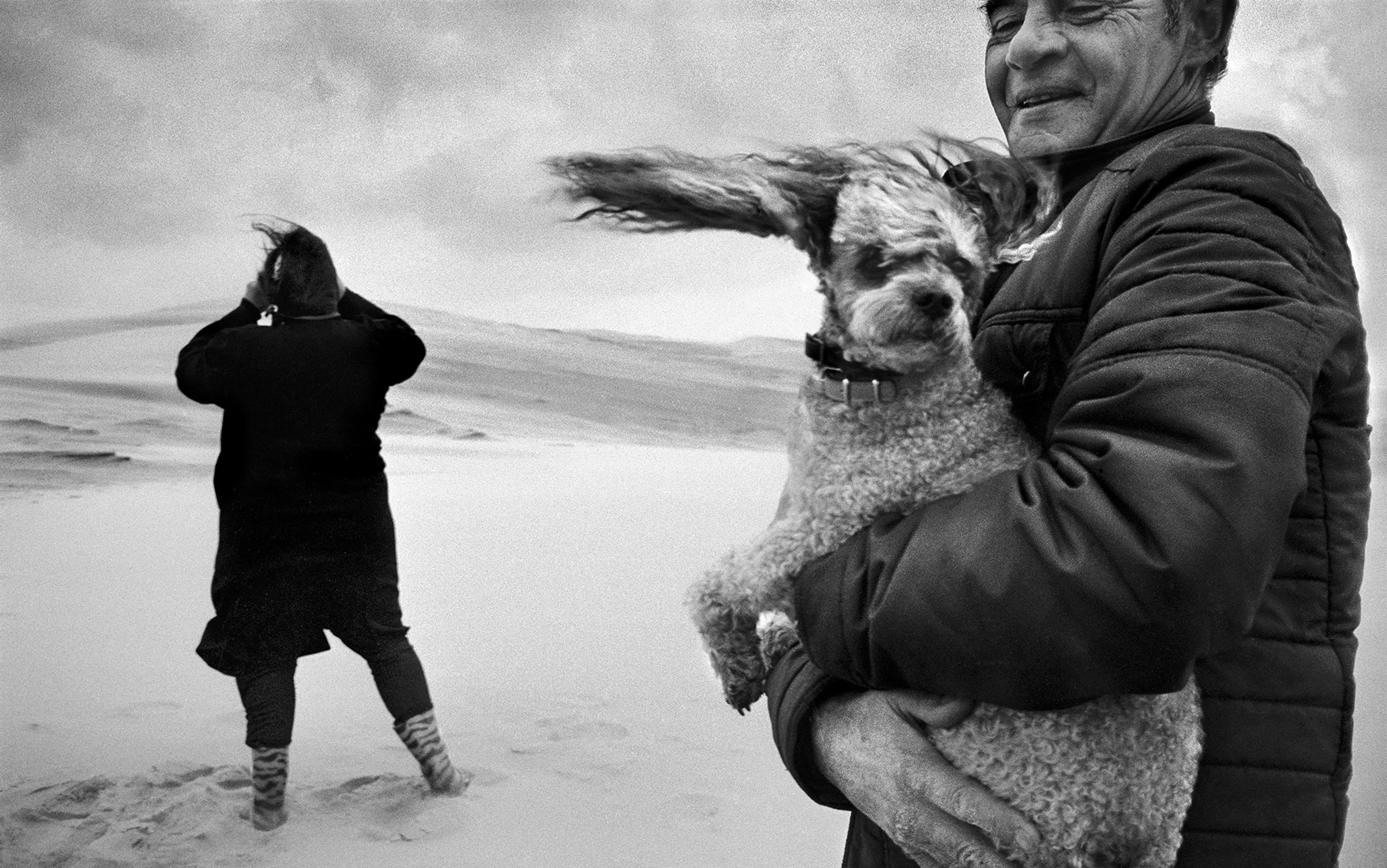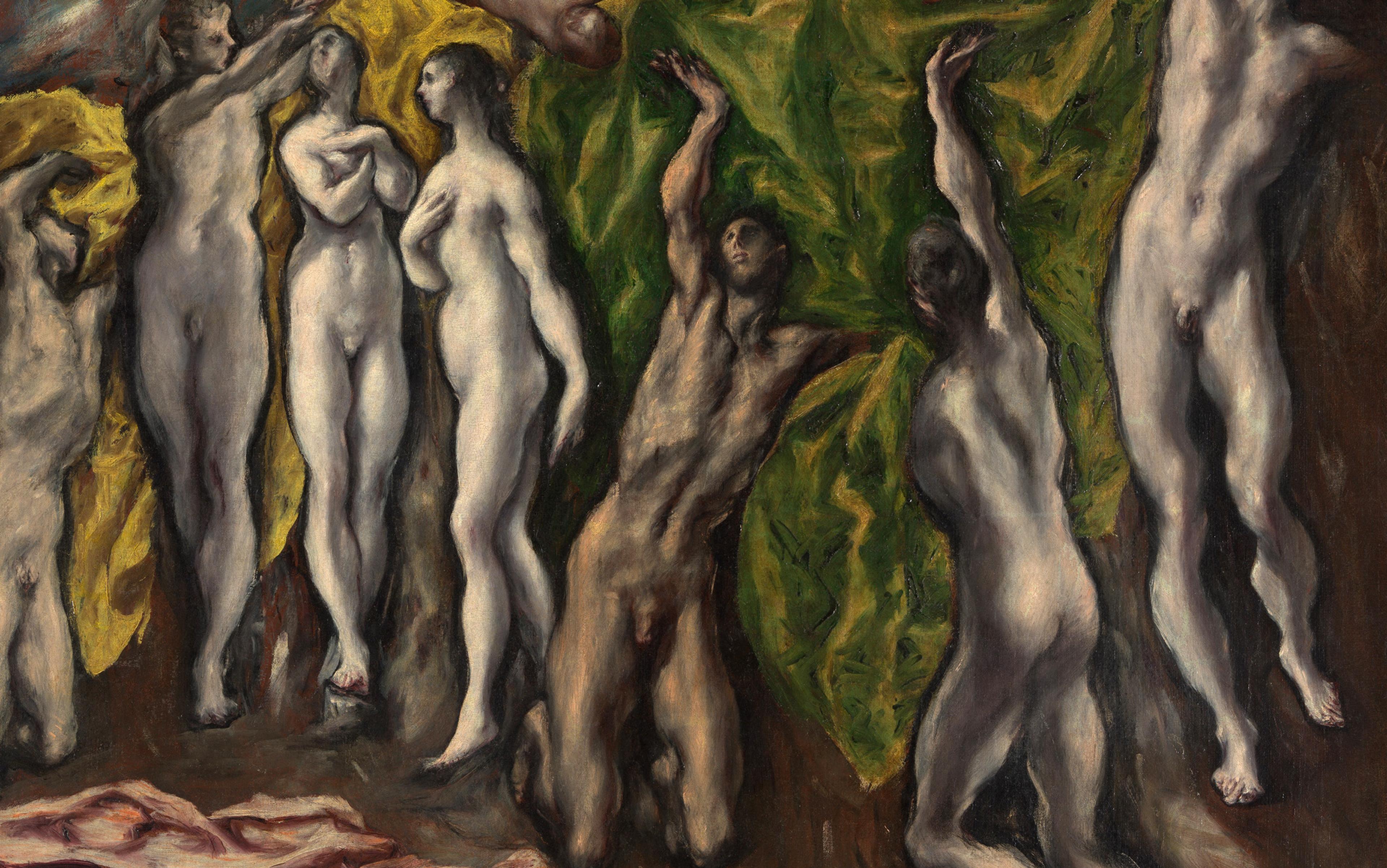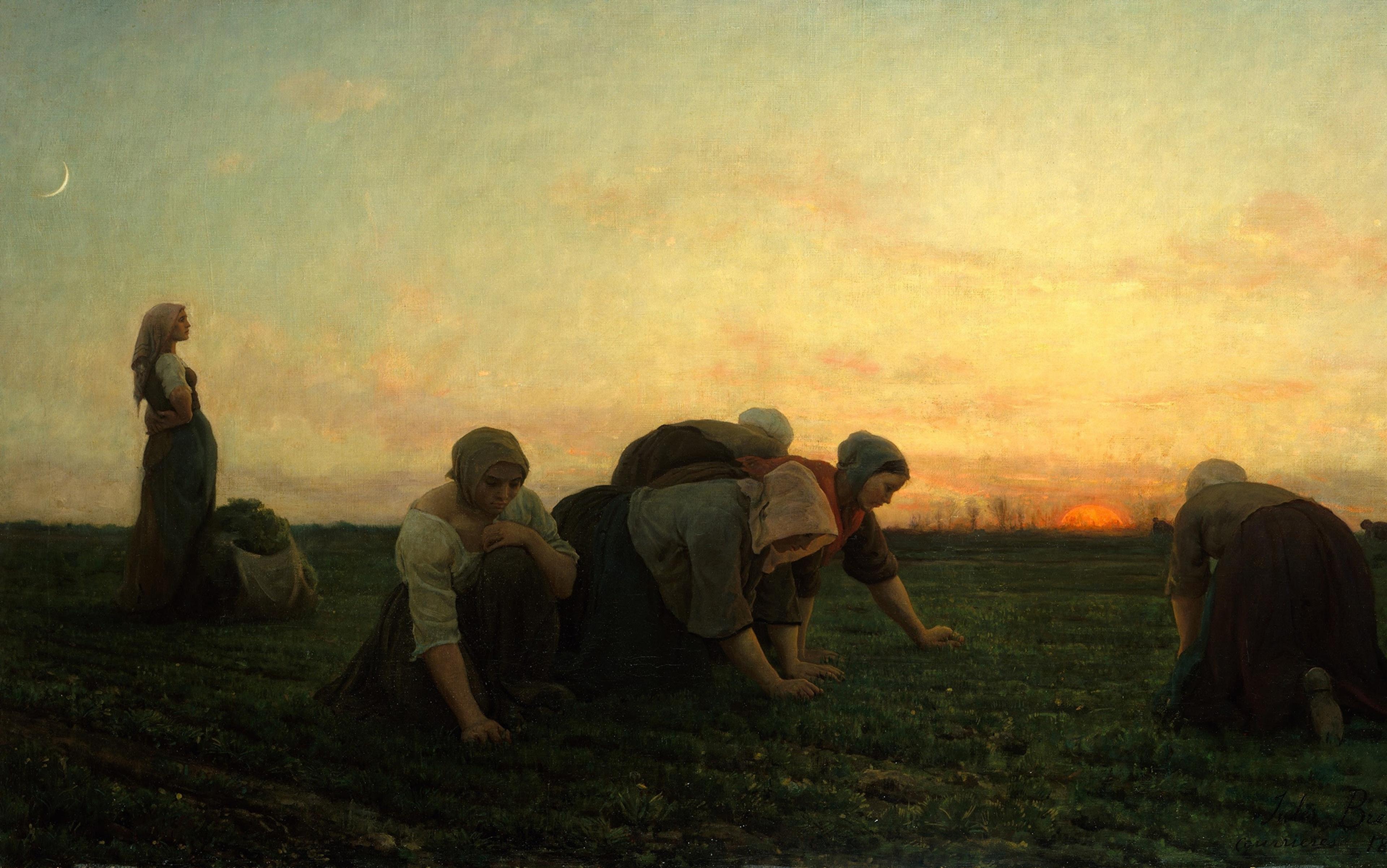What if I told you – like the eerily moving Control Voice in the 1960s TV show The Outer Limits – that ‘you are about to participate in a Great Adventure’, that ‘you are about to experience the awe and mystery’ of the Universe on this journey. And what if I told you that you will witness many strange and marvellous beings, creatures and sensations along your path; that you will experience new colours, shapes and textures – make contact with fields and trees, and with people from a wealth of backgrounds; invigorating games, vehicles, animals, the touch of mud and flesh, sweet and savoury foods, new companions, the experience of love and friendship, of anger and hurt, of aloneness and contemplation. And what if I said that all these experiences will lead to fresh ideas, creations and relationships… to a personality with choice and possibility as well as limits and apprehensions; and that these limits and apprehensions will point to a vast background of sky and consciousness, a background that will give you the feeling of being a part of something much greater than yourself?
And what if I told you that you will be able to feel as I did as a 12-year-old lying on a beach near New York City in 1968 – outstretched on the sand with the wind in my hair and the waves lapping at my heels, fresh out of the water where I bodysurfed and wave-hopped to my heart’s content. It was a scene where my dad and I, and hordes of other beachgoers, gathered around transistor radios listening to tunes like ‘Time of the Season’ by the Zombies.
And what if I told you, further, that you will be able to hold Great Conversations on this adventure, like I did with my dad on that beach, that you will have the chance to do something creative, to love deeply, and to contribute to the Great Chain of Being starting from your earliest ancestors and ending with you and your successors. And, finally, what if I told you that you will be given an essentially blank canvas on which to ‘paint’ or ‘write’ your own story, and that you can do this over decades, with all the resources that a human mind and heart can offer. Would you want to go? Would you be willing to scrape together all you could to be a part of this journey? Or would you fritter it away, engage in idle chatter, trudge through mechanised routines, and dabble in surface relationships?
Today, thanks mostly to our technologies, people are taking the second path through life much of the time. Today, we are rapidly becoming ‘tech-vexed’ – my word for the gradual yet relentless seduction of computerised life. The COVID-19 pandemic simply accelerated a trend: many of us are now more intimately connected to smartphones than to nonmediated relationships with people. The net result of this insular life is that relationships with ourselves and others take on a new hue. First, we live in a world that is more predictable than the ‘raw’ world of face-to-face relationships. Second, we live in a world that, at least on the surface, is more controllable than the latter; and third, we live in a world that, for many, is far less consequential than a live – physically and emotionally demanding – relationship.
What are the effects of such a scenario? Here are several. It is much easier, at least ostensibly, to live in isolation from other people. It is much easier to develop a relationship to a leader, a party, a doctrine – or, for that matter, a television show (or set of shows) – and a passive-receptive lifestyle than it is to live in direct contact with people, with the exchange of ideas, with the diversity of perspectives, with wonder and surprise, and with unsettling yet potentially edifying truths about life.
Moreover, it becomes easier to live virtually – through games, shows, video personalities, five-inch (and sometimes 75-inch!) screens – than it is to live directly, without barriers, without prearrangements, without games or physical and psychological distance. The virtual life also makes it easier to achieve illusions of grandeur – like the boy or girl with the most views on their Instagram photos, or the person with the most hits for a clever Tweet. The power in these situations is enormous, and yet it is so often about trivial matters – unless disinformation spurs an attempt to take over the US government as occurred on 6 January 2021, or just spreads racist hate.
The upshot of device-mediated encounters is that they may be benign in single instances but collectively they are alarming. The larger question is where we are headed with such encounters. How do they impact our capacity to love, to be present to one another, to sort out what deeply matters about oneself and life? What impact do they have on human capabilities in general, but in particular those that give us a sense of integrity and of whole-bodied experiences of life?
Take the question of authenticity for example. Is an online relationship as honest, open and palpable as a face-to-face relationship? Does the absence of taste, touch, smell – or blood, sweat and tears for that matter – make a difference in the quality of what is experienced? Is immersion in a video game or chat room the same as playing a game on a wet grassy field, or congregating with an in-person group? Is the engagement of artificial intelligence and devices that operate by algorithms to create books, articles, works of art equivalent to people inspiring those products? Is anxiety and vulnerability necessary to deeply move people, or can machines replicate that effect through ‘self’-programming? These are vital questions – imperative questions – that cannot, in my view, be substantively answered by surveys or quantitative studies. They must be searched out in the arts and in careful descriptions of people’s living, breathing experiences.
In the film The Whale (2022), a 600-pound teacher of literature (played by Brendan Fraser) asks those he’s close to – including his daughter, his nurse, a jittery evangelist, and his literature class – to throw their daily routines aside for a moment, and just be honest. Be honest with themselves, with him and with society; and try to live life with full acknowledgment of the fragile, momentary flicker that it spans. And if you live that way, he intimates, you will discover a fresh new world, an energising new world, where people can really see and hear each other, and priorities tend to align with hearts. The irony of course is that, as he realised how profoundly he had squandered his own possibilities for living, and quite literally made a career of hiding, he was speaking to himself. To thine own self be true, yes?
To what extent does machine-mediated living gratify, ennoble?
While this film had many engaging facets, its accent on authenticity, on the cry for raw and direct contact within and between people could not be more telling. In this sense, I saw the movie as a timely work of art alerting us not just to isolated incidents of falsehood but to the state of our society. It is a cautionary tale about the many ways we can hide today, amplified by the tech-entranced, drug-induced and ideology-riddled ‘fixes’ all about us.
Corresponding to the price of authenticity, the tech-vex can also exact a price on human dignity. It begs the question, to what extent does machine-mediated living gratify, ennoble? Can it replace the sense of fulfilment that people feel when they attain a skill or achieve an insight? Can a work put together by artificial intelligence match the eloquence of that put together by a Beethoven or a Rembrandt? While these are questions to be pursued, perhaps the deeper question is what happens when passion – blood, sweat and tears – are no longer required for great works or relationships or expertise? Are the products that result equally passionless – even if technically superb? And how does the agent of such products feel gratified if their humanity has little or no input in the products’ creation?
Finally, there is the question of power. Is transhumanism – the movement associated with the futurist Ray Kurzweil, which holds that genetic engineering, nanotechnology and robotics are the path to the perfectibility of human life – an illusion or a reality? From the standpoint of a time-honoured American – and, in particular, capitalist – mythos, it is assuredly a reality. But from the standpoint of a more humanist and philosophical standpoint, it is a quite different story.
Let’s take the former narrative first. Fritz Lang’s film Metropolis (1927), about the takeover of society by machines, is well known. But less well known, though arguably deeper in the psychological DNA of actual urban life at the time of Lang’s film, is the almost reverential obsession with devices. Consider the following comparisons, which elevated industry to a religious-like status in the early 20th-century United States. We can begin with the artist Joseph Stella’s rendering of the Brooklyn Bridge as ‘a new DIVINITY’ which is ‘on the threshold of a new religion’; then consider how tall buildings were dubbed ‘cathedrals of commerce’, and capitalism the ‘religion of business’. Depictions of smokestacks were described by the painter Charles Demuth as the ‘incense of a new church’, and the US president Calvin Coolidge observed that ‘the man who builds a factory builds a temple’ and ‘the man who works there worships there’. Was this really the basis on which we deigned to fashion our future?
And yet there appears to be a growing number of people, Kurzweil notwithstanding, who would answer yes.
From the humanist standpoint, however, these ‘stand-ins’ for religion, and godliness and control, are illusory. Not only are they illusory because of the price paid for the loss of our ‘humanity’, but also because ‘God’ or ‘perfectibility’ or ‘truth’ are illusory themselves. And, until we obtain omniscience, until our consciousness equates to infinity, we will always be vulnerable, inadequate on some level. The clay-footed history of narcissists and empires has only underscored this perspective.
So how, from a humanist position, do we approach the tech-vexed, perfection-striving humanity that is fast encroaching right now? What is the antidote to what I’ve called ‘roboticism’, or the transformation of humans into machines?
While there is clearly no antidote as such to this problem, there is a sensibility – also growing in stature – that, in my view, powerfully counters the roboticist trend, and this sensibility is ‘awe’. I think of awe as the humility and wonder, or sense of adventure, toward living. It has also been defined as a sense of vastness that defies accommodation. However one defines it, the sensibility of awe subverts mechanised living. It demands we live in the present, spontaneously, and with radical openness.
That being said, one of the challenges with awe is that it is so often framed as a ‘high’, or short-term lift. That is why I distinguish between the short-term jolt of awe, or what I call ‘quick-boil’ awe, and the life-changing ‘slow-simmer’ form of awe.
The quick-boil form of awe tends to link with activities such as hiking through woods, falling intensely in love, taking a mind-altering drug, playing a vigorous sport, and travelling to exotic places. The slow-simmer awe, on the other hand, transforms the exhilarating energy of quick-boil awe into something long-lasting – such as staying open to the daunting scenery of every day, making a lifestyle of wonder and discovery, delving deep into a project or craft, and consistently engaging with life’s many-sidedness, whether unveiled in one’s work or love life, in child-rearing, friendships, or the larger community of which one is a part.
It is anxiety that enables us to live with and make the best of the depth and mystery of existence
In this light, slow-simmer awe is still somewhat countercultural because it challenges the very core of our socioeconomic machinery – the quick-fix/instant-results model to which so many of our lives are tethered. We see so many of the fly-by-night excursions into awesomeness. These are exemplified by such engagements as the new space travel among billionaires, or the ever-expanding amusement parks and computer-generated movies. But are these ‘shots’ of awe sustainable over the long term? Do they lead to a gratifying and transformed life? The picture is not so clear; and neither is the question of whether quick-boil awe will become just another commodity amid the glut of products all about us, and do little if anything to impact our general way of living. It may not help all that much if we are entranced by awesome gadgets and awesome ways to spend a weekend but are not able to achieve that enchantment in our homes, our places of work, and our day-to-day connections with people.
Let me be clear that I do not condemn the movement toward cultivating quick-boil awe. It is a real and powerful advance over the routinised efficiency orientation of robotic living. It is also – potentially – an imperative step toward the longer-term, life-altering cultivation of awe, both for individuals and for society at large. The problem, however, is that we are so susceptible to commodification in our culture, and to the conversion of substantive reforms into expedient elixirs, that we need to stay ever vigilant about the larger path that is imperative for us.
In a nutshell, if awe is to be a life-changing experience, it will need to encompass something that is all too often overlooked in today’s prepackaged world: anxiety, and in particular, life-enhancing anxiety. Life-enhancing anxiety is invigorating anxiety. It is anxiety that enables us to live with and make the best of the depth and mystery of existence. It also enables us to live with and make the best of the paradoxes of existence, such as our capacity for wonder and discovery in the midst of apprehension and even dread. Too often, however, we ignore the paradoxes of anxiety and fail to do the work necessary to go beneath the surfaces of life, to unveil the fuller and deeper questions of life.
Among these questions are: given the spectre of death, how is one willing to live? What is the purpose and meaning of one’s life, of the life of one’s culture? How do we shape ourselves and our societies so that we can pursue what we love? How do we avoid war and tyranny, sexism and bigotry? These are just a few of the questions that life-enhancing, slow-simmer awe can prompt for us, and that a more marketable, quick-boil awe may too easily overlook.
Let me elaborate. While quick-boil awe focuses more on the overt and measurable aspects of awe, such as the frequency of goosebumps one experiences, or the location of brain activation, or the degree of prosocial behaviours during awe-inducing activity, slow-simmer awe is a much more layered and nuanced experience. For example, if we search beyond the surfaces of slow-simmer awe, beyond the readily observable, we often find the element of unease, of apprehension, and even of dread. Put more plainly, when we peel back the layers of slow-simmer awe, we often find death, or the ‘complex symbol of death’ as Ernest Becker so well termed it in his book The Denial of Death (1973). Consider, for example, how the complex symbol of death – or the groundlessness and helplessness of our condition – looms abidingly in classical art: painting, music and literature. This is because the element of death looms over and intensifies the elements of grace, beauty and compassion that exemplify such work. It intensifies the poignancy of a Rembrandt or a Van Gogh; the rapture of a Beethoven’s Ninth or Mahler’s Fifth symphony; the vivacity of a Zorba the Greek; and the nobility of a Kirsten Dunst in the masterful Lars von Trier film Melancholia (2011).
In my own life, I think of all the layers of slow-simmer awe when swimming in the ocean with my son. I reflect on the radiance of the sun on our glistening skin; the rhythm and power of the waves as we climb into them; the vigour and play of the moment; the camaraderie of a friend who accompanies us; the feeling of being alive and healthy; the closeness I feel to my son as I realise the miracle of our connection; the link to having presided at his birth and the profundity of that event. Then, if I really unveil that ocean scenario, I feel the resonance of my time with my father in the ocean; the unbridled play and excitement of those moments, though also the unease of how quickly they passed and how quickly my father too passed despite his robust presence. I reflect on the great chain of being among me, my son, my father, my mother, my aunts and uncles, my grandfather and grandmother, and my great-grandparents as far back as I could remember, and how appreciative I am of their stories and offerings that led us to this moment on a roiling sea. My consciousness stretches even farther as I look out on that vast indefinite seascape, acutely aware of how minuscule we all are and how astounded by its force. And, behind it all, death – groundlessness and helplessness – the great mystery, looms like a miasma, colouring and intensifying every move. The shadow of death cannot part from the love I feel, and that I would surmise we all feel in that ocean party.
The awareness that one step too far, one shark attack, one slip is that much likelier than what we anticipate in routine living. Each move concentrates it all, consecrates it all. I feel love in those moments, just as much or more than in any other moments in my life – I’m speaking of the vulnerability of love, for sure for my son, but also for my friend, for humanity, for life.
But that physical peril does not have to be present to experience slow-simmer awe. I experience it in the love for my wife, for example, in the many horizons of mystery that surround our relationship. These horizons embrace vastly different cultural backgrounds, religious heritages, and family lineages. They overlap in places but diverge widely, deeply and across dozens of centuries and thousands of miles. I see these horizons in the many myths that accompany our upbringing – the stories of heroes and devils, gods and goddesses, dogmas and enigmas, traumas and triumphs. They are all so rich and so alluring, but they are also bound up with transience, fragility and, ultimately, loss. Death looms at the margins, but it also amplifies the day-to-day, especially if we can appreciate its play upon all that we do and are.
I can’t imagine art that’s worth its materials, or love that justifies its endurance that doesn’t acknowledge death
How different are the above scenarios from what many of us experience when we peel back the layers of awe – not only with family or friends, but with works of art, experiences of beauty, experiences of joy and creativity? My point is that a key omission in the move toward quick-boil awe and indeed quick-boil living is the lack of recognition that death, groundlessness and mystery envelop all. It is precisely this contrast, this radical unknowing that accentuates and deepens what we do know and feel.
I may be way off base here, but I can’t imagine art that’s worth its materials, or love that justifies its endurance, or accomplishments that fulfil their investment that don’t acknowledge death – vulnerability, anxiety – somewhere in their formation. This is also why I have concerns about recent trends in awe research that de-emphasise or even reject these darker elements of unease.
Consider, for example, Dacher Keltner’s recent volume Awe: The New Science of Everyday Wonder and How It Can Transform Your Life (2023). This is a remarkable compendium of studies about the virtues of awe. But these studies are almost exclusively quantitative-experimental and, as a result, restrictive of the deeper and more subtle impacts of awe, which have been revealed in classic literature and the arts, as well as in methodical qualitative studies of awe. Specifically, these studies show that there is almost invariably a daunting element to awe, especially when it is experienced as life-transforming, which is almost entirely neglected in the studies Keltner cites. He states that his ‘quantitative approaches’ indicate that ‘our feelings of awe … are far away from fear, horror, and anxiety’. But it is my contention, and the contention of a millennia of qualitative enquiries, that awe is as profound and humbling as many experience it to be, precisely because it is contextualised by fear, horror and anxiety – or, in a word, vulnerability. And it is that vulnerability that is getting increasingly jeopardised by computerised models of our humanity.
What all this amounts to is that the ‘existential unconscious’, as Robert Kramer puts it, or the spectrum of primal psychospiritual states, must be accounted for in any comprehensive enquiry into awe; otherwise we are skimming surfaces and short-changing the public about the work that is required to attain fuller and more life-altering experiences of awe. I assert the same principle regarding any substantive human experience: when death and paradox are left out of it, it lacks the force that can reform individual and collective lives.
Here, then, is my summary of the capacities we need in order to optimise slow-boil awe. Or, to put it conversely, these are the capacities that are likely to atrophy the more we model ourselves after machines:
- The capacity to slow down.
- The capacity to optimise presence, or the holding and illuminating of that which is palpably significant within ourselves, and between ourselves and others.
- The capacity to deeply reflect on ourselves and our society.
- The capacity to act on our reflections about ourselves and society, to make available a more awe-based path for ourselves and our world.
- The capacity to savour the delights of life (like a newborn baby or a love relationship) even as they are tinged with sadness and pain.
- The capacity to be deeply moved throughout one’s lifetime.
- The capacity to focus on what one loves.
- The capacity to see the big picture of life and its possibilities.
- The capacity to translate that vision into a society that prioritises it, and that supports it culturally, politically and economically.
- The capacity to appreciate mystery.
- The capacity to appreciate the fact that we are alive.
- The capacity to nurture balance (for example, between fragility and boldness).
- The capacity for solitude.
- The capacity to commune with nature.
- The capacity to deeply appreciate travel and the ‘foreign’.
- The capacity to engage in depth therapy or meditation.
- The capacity to seek and find support from an awe-based mentor.
- The capacity to trust the evolving nature of life.
- The capacity to give oneself over – discerningly – to the unknowable.
- The capacity to trust the ultimately unknowable.
Let’s give Becker, who grappled mightily with the cost of automation, the final word:
whatever [the human being] does on this planet has to be done in the lived truth of the terror of creation, of the grotesque, of the rumble of panic underneath everything. Otherwise it is false. Whatever is achieved must be achieved from within the subjective energies of creatures, without deadening, with the full exercise of passion, of vision, of pain, of fear, and of sorrow.
This essay is adapted from the chapter ‘Tech-Vexed: The Awesome Price for Artifice’ by Kirk Schneider from the anthology Values and Indigenous Psychology in the Age of the Machine and Market (Springer Link, 2024) edited by Alvin Dueck and Louise Sundararajan.






